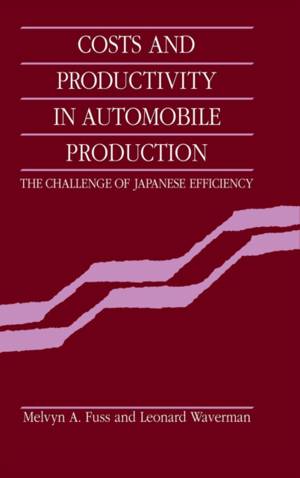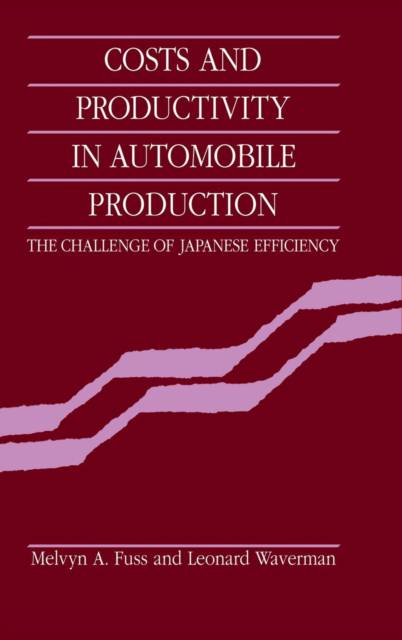
Door een staking bij bpost kan je online bestelling op dit moment iets langer onderweg zijn dan voorzien. Dringend iets nodig? Onze winkels ontvangen jou met open armen!
- Afhalen na 1 uur in een winkel met voorraad
- Gratis thuislevering in België vanaf € 30
- Ruim aanbod met 7 miljoen producten
Door een staking bij bpost kan je online bestelling op dit moment iets langer onderweg zijn dan voorzien. Dringend iets nodig? Onze winkels ontvangen jou met open armen!
- Afhalen na 1 uur in een winkel met voorraad
- Gratis thuislevering in België vanaf € 30
- Ruim aanbod met 7 miljoen producten
Zoeken
Costs and Productivity in Automobile Production
The Challenge of Japanese Efficiency
Melvyn A Fuss, Leonard Waverman
Hardcover | Engels
€ 187,45
+ 374 punten
Uitvoering
Omschrijving
Motor vehicles are prominent among the flows of exports and/or imports for Canada, Germany, Japan, and the United States, and these trade flows are heavily influenced by the basic relative competitiveness of the production processes for automotive manufacturing. In this book the authors analyze the factors that contributed to the comparative cost competitiviness of the four countries' auto industries over the period 1961-1984 and disentangle the factors contributing to the Japanese cost and efficiency advantages. The authors provide estimates of comparative costs of automobile production (both short-run and long-run) and the sources of these cost differences, based on the econometric cost function methodology. An innovation is the careful treatment of capacity utilization, one of the most important sources of short-run cost and efficiency differences. This methodology is also used effectively in an analysis of the Canada-U.S. Auto Pact, a unique experiment in trade liberalization. Previous estimates of cost and efficiency differences using the plant inspection and comparison of company financial reports methodologies are also evaluated.
Specificaties
Betrokkenen
- Auteur(s):
- Uitgeverij:
Inhoud
- Aantal bladzijden:
- 256
- Taal:
- Engels
Eigenschappen
- Productcode (EAN):
- 9780521341417
- Verschijningsdatum:
- 24/04/1992
- Uitvoering:
- Hardcover
- Formaat:
- Genaaid
- Afmetingen:
- 158 mm x 236 mm
- Gewicht:
- 453 g

Alleen bij Standaard Boekhandel
+ 374 punten op je klantenkaart van Standaard Boekhandel
Beoordelingen
We publiceren alleen reviews die voldoen aan de voorwaarden voor reviews. Bekijk onze voorwaarden voor reviews.











